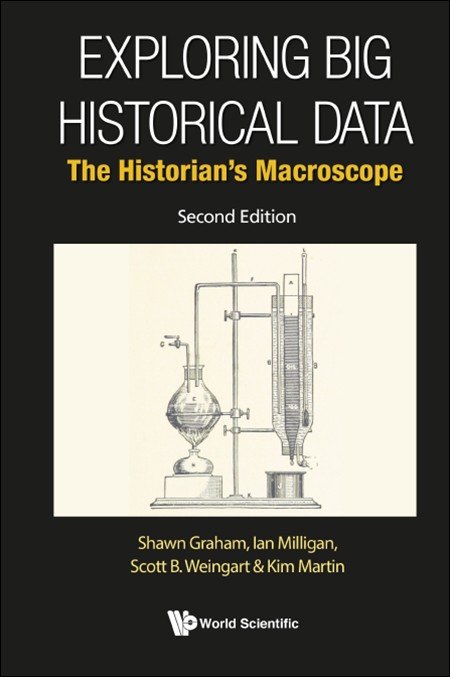Every day, more and more kinds of historical data become available, opening exciting new avenues of inquiry but also new challenges. This updated and expanded book describes and demonstrates the ways these data can be explored to construct cultural heritage knowledge, for research and in teaching and learning. It helps humanities scholars to grasp Big Data in order to do their work, whether that means understanding the underlying algorithms at work in search engines or designing and using their own tools to process large amounts of information.
Demonstrating what digital tools have to offer and also what 'digital' does to how we understand the past, the authors introduce the many different tools and developing approaches in Big Data for historical and humanistic scholarship, show how to use them, what to be wary of, and discuss the kinds of questions and new perspectives this new macroscopic perspective opens up. Originally authored 'live' online with ongoing feedback from the wider digital history community, Exploring Big Historical Data breaks new ground and sets the direction for the conversation into the future.
Exploring Big Historical Data should be the go-to resource for undergraduate and graduate students confronted by a vast corpus of data, and researchers encountering these methods for the first time. It will also offer a helping hand to the interested individual seeking to make sense of genealogical data or digitized newspapers, and even the local historical society who are trying to see the value in digitizing their holdings.
Request Inspection Copy
Sample Chapter(s)
Preface
Chapter 1: The Joys of Big Data for Historians
Contents:
- Acknowledgements
- Figures, URLs, and Code
- Preface
- The Joys of Big Data for Historians
- The DH Moment
- Data Mining Tools: Techniques and Visualizations
- Topic Modeling: A Hands-On Adventure in Big Data
- Making Your Data Legible: A Basic Introduction to Visualizations
- Network Analysis
- Networks in Practice
- Conclusion
- Index
Readership: Researchers, graduate and undergraduate students in the field of Digital Humanities, and people looking to digitize historical archives.
Reviews of First Edition:
"If you're wondering about the how and why of starting a Digital Humanities project, this text can answer most of your questions. I've found it both simple and easy to navigate, but also profound and thought-provoking for methodological questions outside Digital Humanities."
Dr Daniel Franke
Historian at the US Military Academy at West Point
"Without a question, I would use this book in a digital history class, especially one in which I wanted to introduce network visualizations. It does an excellent job of defining and illustrating the insiders' language of digital humanities, making the volume accessible to students and to historians. The presentation of the basics of network analysis is among the clearest that I've seen in a digital humanities text."
Professor Janice L Reiff
Core Faculty in Digital Humanities, UCLA
"The idea of the Internet as a physical network structure, and the associated theories of networks and networked interactions, are very new to many undergraduates, and for some the learning curve can be steep — so the absence of an undergrad-friendly introduction to Network Analysis was a real gap, which this book fills."
Dr Stuart Dunn
King's College London
"The real strengths of this book are in their straightforward explanations of what can at first seem like fairly daunting topics, as well as the excellent background information on the development of the field of digital history. The book would be valuable for a postgraduate or academic looking to get up to speed on several approaches to textual analysis … I would heartily recommend it for anyone designing a course on digital textual analysis, and students can expect a solid background in a range of useful concepts, including distant reading, topic modeling, and network analysis, as well as data visualisation."
Reviews in History
"This primer offers a fine introduction to big data for the next generation of humanities researchers. Summing Up: Highly recommended."
Choice
"As historical source materials increasingly become digitally available — and thus the data they comprise become increasingly big — the work of the historian transforms. Computational tools become partners in experiments that help generate meaning out the vastness of the historian's data — but these technological possibilities raise a whole new set of questions with which researchers must wrestle. In this essential volume, Graham, Milligan, Weingart, and Martin bring an approachable style, diverse experience, and deep knowledge to an exploration of the benefits and the challenges presented by digital tools and methods."
Kathleen Fitzpatrick
Director of Digital Humanities and Professor of English
Michigan State University






